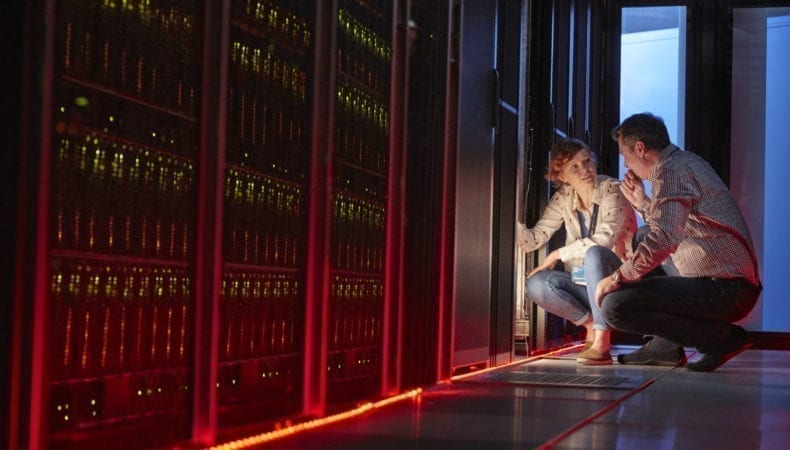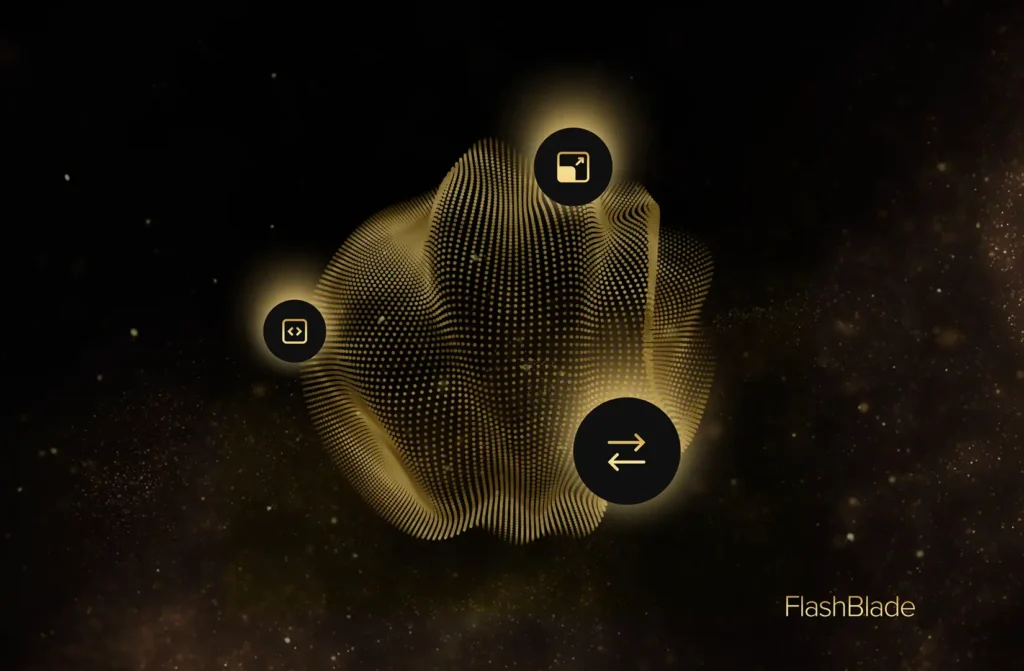With the release of the R3 edition, the entire Pure Storage® FlashArray™//X portfolio is 100% NVMe and has the new Intel Xeon Scalable Processor CPUs. From the //X10 to the //X90, you can expect up to 25% increase in performance vs. the previous generation FlashArray//X. Get the new specs and additional information about this latest refresh in the //X R3 announcement post.
We can happily talk speeds, feeds, and performance all day, but what do people who use our products have to say about the experience compared to our competitors? Pure has been a leader in customer experience for several years, thanks to the Evergreen™ Storage program.
In fact, IDC wrote a fantastic guest post and a full white paper outlining details of the Evergreen program, and how it has contributed to improvement in the storage industry as a whole (not just only for Pure’s own customers). In it, IDC writes “The legacy model for how enterprise storage vendors interact with their customers during product acquisition, ongoing management, and technology refresh is giving way to a much better model that is strongly preferred by end users.”
The “legacy model” IDC mentions has so long been the standard, that most IT technologists don’t realize that there is another (and better) way. In the white paper, IDC mentions “Purchasers of enterprise storage have historically dealt with an upgrade cycle that was expensive, disruptive, inherently risky, time-consuming, and strongly driven by vendors’ technology refresh cycles and pricing”.
If you’re reading this post, you’ve likely gone through one (or more!) of these upgrade cycles. With how fast storage technology is changing, having to wait five years for an infrastructure technology refresh might seem like the dark ages—especially now that many enterprises are getting used to rapid technology changes.
How does all this affect the customer experience? Let’s go through some examples.
The NetApp Experience
NetApp’s flagship storage products include the FAS (Fabric-Attached Storage) product line, AFF (All-Flash FAS) product line, E-Series, and EF-Series. While each of these product lines has a use case specified by NetApp, the result is highly fragmented storage product lines. Customers need to correctly identify the product line that best fits their business and need—and hope that does not change anytime soon. While it’s a valid concern, we’ll table that discussion for another time. For now, let’s assume that a customer has chosen an AFF product and wants to upgrade to the latest model. This exact scenario recently came about with the AFF A320 product, which was released in May 2019¹. Fast-forward five months to October 2019, NetApp released the AFF A400 product, replacing the AFF A320². (NetApp does continue to sell the AFF A320.)
So, what is the customer experience with this refresh? Customers cannot perform a data-in-place “upgrade” from the AFF A320 to the AFF A400. Nor can they perform a data-in-place upgrade from any other AFF A-Series arrays to the AFF A400³. They must buy a new system and perform either:
- storage move — move the old storage media to the new array, which is a disruptive procedure that depends on compatibility requirements; or
- volume move — move the data volume from the old array to the new array, which is a non-disruptive procedure⁴
Both options require customers to buy a new array. While the volume move is non-disruptive to applications, customers had to buy the new array with capacity, essentially re-buying the capacity they already had. This is the approach that NetApp customers have experienced for the last 20 years⁵, and it hasn’t changed across any of their product lines.
The Dell Experience
In 2015, Dell acquired EMC for a whopping $67B, which included the EMC storage products VMAX, VNX, Isilon, Atmos, XtremIO, ScaleIO, Unity, and ECS. Today, most of those product lines are still being sold, with most having generational tech updates and minor name changes. (VMAX is now PowerMax, Unity is now Unity XT). But the acquisition and technology refresh customer experience for Dell (EMC) storage products hasn’t changed in the last 20 years⁶.
For example, if a customer has a VMAX All-Flash product, they cannot perform a data-in-place upgrade to the new PowerMax. They’ll have to buy a new array, which includes re-buying the capacity they already had in their VMAX, and migrate the data via Dell’s “Non-Disruptive Migration” process which uses SRDF/Metro⁷.
This has not changed with the newer PowerMax family. A PowerMax 2000 customer cannot perform a data-in-place upgrade to the PowerMax 8000 without buying a new PowerMax and migrating the data.⁸
Dell says its “Future-Proof Loyalty Program gives customers additional peace of mind with guaranteed satisfaction and investment protection for future technology changes.”⁹ However, they accomplish this with the same SRDF/Metro migration process.¹⁰ Something else to consider:
- What if a customer doesn’t have a license for SRDF/Metro, which isn’t included in the base essentials software license¹¹?
- Will the customer need to purchase the Pro software package to use SRDF/Metro so that they can migrate to their new array?
What about Dell’s other storage products? Dell has teased some form of “consolidation” for its mid-range storage products since its September 2018 Analyst Meeting¹² by hinting at a product called MidRange.next¹³. It’s been delayed several times¹⁴, but will likely be launched at Dell Technologies World in May 2020¹³. Various blogs¹³ ¹⁴ report that it will be an entirely new platform and that existing XtremIO, Unity XT, and Compellent-heritage SC customers will need to buy the new platform, re-purchase all new capacity, and migrate their data to it.
While Pure has been continually innovating with the latest hardware technology coupled with continuing enhancements to Purity//FA, it looks like Dell is struggling to introduce its next storage product. With Dell, the customer experience of buying new storage arrays, repurchasing capacity, and migrating data to the new array has been the same for the last 20 years and hasn’t changed across any of their storage product lines.
The HPE Experience
HPE has been in the enterprise storage market for a long time, acquiring Compaq (which acquired Digital StorageWorks), 3PAR, and Nimble, while also OEMing the Hitachi Vantara Storage Platform with the HPE XP products¹⁵. Today, HPE’s storage portfolio includes Primera, 3PAR, Nimble, XP8, and a few others.
What is the acquisition and technology refresh customer experience with HPE? In one word, we’d call it disjointed.
- If you are an existing 3PAR customer, there is no path for a data-in-place upgrade to Primera.¹⁶
- If you are an existing Nimble customer, there is no path for a data-in-place upgrade to Primera.¹⁷
You’d need to purchase a new array, repurchase all capacity, and perform data migration to the new array. HPE claims that once a customer has a Primera product, it can use non-disruptive data-in-place upgrades¹⁸. However, HPE’s approach is to add another controller pair to the existing controller enclosure, instead of actually performing “an upgrade” of the existing controller¹⁹. This brings up several questions:
- What are the options for controller upgrades when a customer is already using the maximum of two nodes in a Primera 630 system, or the maximum of four in a Primera 650/670 system?
- How will upgrading or replacing the controllers affect performance?
- What if a customer wants to upgrade to an end-to-end NVMe architecture?
Primera does support NVMe drives, but only in the first eight media slots in Primera 630 (or the first 16 slots in Primera 650/670)²⁰. So, upgrading to a completely NVMe-based architecture isn’t possible. It is also interesting to note that there are no options in Primera for Intel Optane or other storage-class memory (SCM) products, although HPE states future support.²¹
Although HPE has several storage products in its portfolio, we see that the customer experience of buying new storage arrays, repurchasing capacity, and migrating data to the new array is still status quo across their product suite.
The Pure Experience
When designing FlashArray, we wanted to make things easier for people to use. We focused on feedback from customers of the other storage companies and what they disliked about their respective experiences.
The result of thinking differently about storage resulted in FlashArray, which uses a “stateless” controller architecture with very powerful yet easily upgradeable software. With the FlashArray//M release in 2015, Pure engineered a “long life” chassis that used dual-connected PCI Express components. This allowed us to change components and media types to whatever the storage industry came up with.
In 2017, we released the first NVMe-powered FlashArray//X family, including the DirectFlash™ Shelf which connects NVMe-oF via RoCE over 50Gb/sec Ethernet. Previous customers could upgrade to //X non-disruptively with data-in-place. In 2018, we launched the FlashArray //X R2 portfolio which allowed previous customers (including //M customers) to upgrade non-disruptively with data-in-place.
Fast forward to today, we use the same chassis to house the //X R3 controllers and use the NVMe protocol for all system components. This includes the NVMe-connected DirectMemory Cache modules, which use Intel Optane storage-class memory for applications that require the highest performance. Customers can upgrade to the latest technology non-disruptively with data-in-place.
There’s more. You can get our next generation upgrade at no charge as part of Pure’s Evergreen™ Gold subscription. This also includes full trade-in credit for capacity and technology refreshes. We wrapped the Evergreen business-model ideology around this next-generation architecture, and it provides a better customer experience when acquiring and refreshing technology, which differentiates us from our competitors. With FlashArray, our fundamentally different architecture results in a radically better customer experience.
Now we’re on a mission to make the customer experience even better, helping you benefit from a Modern Data Experience.
Resources and Links
¹ “AFF A320: NVMe Building Block for the Modern SAN,” NetApp, May 2019
² “NetApp Announces New AFF and FAS Models,” penguinpunk.net, October 2019
³ “Considerations for upgrading controller hardware,” NetApp
⁴ “Controller Hardware Upgrade Express Guide,” NetApp
⁵ See model history of releases at https://en.wikipedia.org/wiki/NetApp_FAS#Model_history
⁶ See model history at EMC Symmetrix,W ikipedia
⁷ Page 7 of “Dell EMC PowerMax and VMAX: Non-Disruptive Migration Best Practices and Operational Guide,” Dell EMC, September 2019
⁸”Page 7 of “Dell EMC PowerMax and VMAX: Non-Disruptive Migration Best Practices and Operational Guide,” Dell EMC, September 2019
⁹ Page 48 of Dell EMC PowerMax: Family Overview,” Dell EMC, September 2019
¹⁰ Page 49 of Dell EMC PowerMax: Family Overview,” Dell EMC, September 2019, states “Never Worry Data Migrations – Use built-in data migration tools with seamless upgrades to move to next-generation data storage systems”
¹¹ Page 152 of “Dell EMC PowerMax Family Product Guide PowerMaxOS,” Dell EMC, November 2019
¹² Slide 39 in “Dell Technologies Analyst Meeting,” Dell Technologies, September 2018
¹³ “Who’s that walking across the green? It’s Dell EMC, preparing to take its midrange pitch shot,” Blocks & Files, February 2020
¹⁴ “Dell’s Midrange.next Storage Launch Delayed ‘To Address Feedback’,” CRN, February 2020
¹⁵ Announcing HPE XP8: deliver even more availability and performance,” HPE, October 2019
¹⁶ “You can’t run the 3PAR OS on a Primera system and vice versa” per “HPE Primera – First impressions on the new storage platform,” Architecting IT, June 2019
¹⁷ Due to completely different architecture/products, see “HPE scales out 3PAR to build massively parallel Primera line,” Blocks & Files, June 2019
¹⁸Page 6 of “HPE Primera Resets Expectations for High-End Storage,” IDC, June 2019
¹⁹ “Adding a controller node pair to an existing controller node enclosure is called an upgrade” on page 62 of “Maintaining and upgrading HPE Primera 600,” HPE, January 2020
²⁰ Slide 9 of “HPE Primera: La nueva era del almacenamiento,” HPE, July 2019
²¹ “HPE Primera Storage Launched with 100 Percent Availability,” Serve the Home, June 2019







